Did you know the average home in the U.S. uses about 10,400 kWh of electricity each year? This shows how much energy solar power for homes needs to cover.
These solar roof systems catch sunlight to make DC power. Then, they change it to AC power for your home. They also have storage for extra energy, so you always have power, even when it’s dark.
Switching to solar power depends on your home’s energy use, roof size, and where you live. Companies like Core Roofing + Solar help make custom plans. Solar tech can run your home’s basics like heating, cooling, and appliances. This makes a fully solar home a promising idea.
Understanding Solar Roof Systems
Since 2008, hundreds of thousands of rooftop solar panels have been installed across the U.S. More Americans are choosing solar energy. These systems capture sunlight and turn it into DC power.
This DC power is then changed into AC power by an inverter. This makes it ready for household devices. The average system size is 7.15 kilowatts direct current, ranging from 3 to 11 kilowatts.
Many systems come with energy storage like batteries. These ensure power is available at night or when it’s cloudy.
Solar costs have gone down every year since 2009. This makes solar as affordable as traditional electricity in many cities. The Federal Solar Investment Tax Credit (ITC) offers a 26% tax credit for systems installed from 2020 to 2022. It drops to 22% in 2023.
States also offer property tax and sales tax exemptions. Some states give rebates and state tax credits. Plus, net metering lets owners get paid for extra power sent to the grid. This makes solar panels a smart investment.
By using big solar panel systems, homes can become energy-independent. This supports off-grid solar power and makes homes self-sustaining. Using rooftop solar panels cuts down electricity bills and helps the planet.
Factors Affecting Solar Roof Performance
The success of a solar energy system in an energy-efficient home depends on many factors. These include the wattage and panel efficiency, where you live, how much sunlight you get, the state of your roof, how much energy your home uses, and how the system is designed. It’s important to check if your roof is right for solar panels.
In the United States, over 8 billion square meters of rooftops are good for solar panels. This means over 1 terawatt of solar power could be harnessed. About 65% of this potential is on residential rooftops. Also, around 3.3 million homes each year might need new roofs, adding about 30 gigawatts of solar power annually.
When planning for a solar energy system, several key factors must be considered. These include:
- Roof Size
- Roof Pitch and Direction
- Potential Shade Coverage
- Local Climate and Meteorological Data
- Panel Degradation Rates
- System Orientation and Azimuth Angles
High temperatures and shading can lower solar panel efficiency. For example, high temperatures can cut efficiency by 10% to 25%. Shading can also reduce output, especially with traditional string inverters.
Accurate assessments are key. Tools like the National Solar Radiation Database and simulation packages like PVLib and SAM are essential. They help predict electricity production, costs, and financial benefits. This ensures your energy-efficient home gets the most out of its solar system.
Roof conditions, like size, pitch, and direction, are crucial. You also need to consider obstructions and local climate data for a strong solar setup. Companies like Core Roofing + Solar can help save money with solar installations. This shows the value of a well-designed solar energy system for lasting energy efficiency.
Can a Solar Roof Power an Entire House?
A well-designed solar panel system can indeed power an entire house under the right conditions. The average U.S. household uses about 893 kilowatt-hours (kWh) of electricity each month. This is just under 30 kWh per day. To meet this need, a homeowner might need between 15 to 50 solar panels.
Factors like panel efficiency, wattage, and sunlight hours play a big role. The specific energy needs of a household also matter.
Solar power capacity is key to powering a full home. Solar panels usually have a power output of 250 to 400 watts. The most efficient models range from 370 to 445 watts. Higher wattage panels can generate more electricity, needing fewer panels.
The cost of installing a solar panel system can be a barrier. But, incentives like the federal tax credit can help a lot. The initial investment can range from $15,000 to $50,000. Yet, reduced energy bills and incentives make it cost-effective in the long run.
Net metering policies in various states also help. They allow homeowners to sell excess energy back to the grid. This further reduces costs.
Getting professional advice is crucial for a good solar solution. Certified installers can assess your home’s needs. They’ll recommend the right number and type of panels. With the right planning and installation, a solar roof can power your home. This brings financial savings and energy independence.
- The efficiency and wattage of solar panels significantly impact how many panels are needed.
- Federal tax credits and incentives can reduce the financial burden of installation.
- Net metering allows homeowners to sell excess energy back to the grid.
- Professional consultation ensures a tailored solar panel system fitting specific household requirements.
In regions with lots of sunlight getting enough solar power is easier. This makes having a solar roof to power your home a real possibility.
Conclusion
Solar roofs are a strong, green choice for power, especially with more outages, high costs, and environmental worries.
A 2,000 square foot roof can make about 30 kilowatts of power, showing big potential for energy freedom. It’s key to think about your home’s needs, sunlight, and how many tiles and batteries you’ll need. Getting a pro to check your roof ensures it’s ready and helps size the system right.
Solar roofs save money over time, thanks to tax credits and other benefits.
As tech gets better and prices drop, solar energy gets easier to get. Starting with solar is a smart move for a greener future. It might cost a lot at first, but it’s worth it for a sustainable home.
Contact Core Roofing + Solar of the Denver area today for professional roofing services!







